The road from the floor of the Verde Valley into Jerome, Arizona, twists and turns like a rattlesnake, a ravine on one side and rock faces on the other. Houses cling precariously to the hillside. Four pink plastic flamingos stand at the entrance to one driveway. The house itself is totally invisible; the driveway disappears out of sight down the mountain.
Jerome is a former mining town stuck to the side of Arizona’s Black Hills. From below, it looks like a hill village you’d expect to find in coastal Europe. The town owes its existence to the discovery of rich seams of copper here in the 1870s, and between 1890 and 1900 the population grew from 250 to 2,500. Today it’s less than 500; the copper is long-gone.
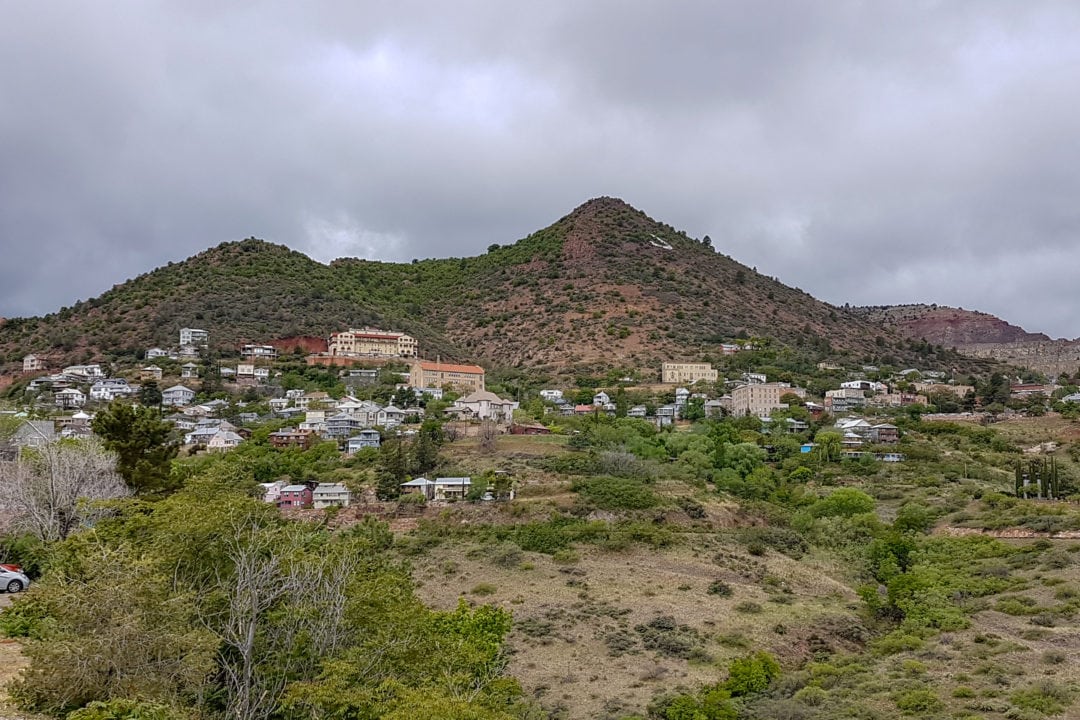
Instead of minerals, Jerome now mines its own rich history and has reinvented itself as a tourist town. On a Saturday afternoon in February—before people all over the country are self-quarantining in their homes—there’s not a parking space to be found. Bars boom out music, bikers straddle their Harleys, restaurants with names such as the Haunted Hamburger and the Bordello of Jerome are overflowing, and people gaze into numerous gallery windows.
It’s worth braving the crowds, though, to visit Jerome’s hidden jewel: Nellie Bly Kaleidoscopes, the largest kaleidoscope dealer in the world.
Nellie Bly
As expected, kaleidoscopes cover every surface of the shop—there are brass, wooden, and rectangular kaleidoscopes, and some are so big I feel as if I could look at the moon through them. The hundreds of kaleidoscopes on display can all be picked up and viewed, despite the hefty price tags on some. People bend to peer into them, turn the tops, turn the bottoms, and hold them up to the light.
The shop is owned by partners—in business and in life—Mary Wills and Sally Dryer. Wills bought her first kaleidoscope in 1969. “I went to New York after graduate school where I had a job at the World Trade Center,” she says. “While I was waiting for the job to start, I went to the Museum of Modern Art, bought an $18 kaleidoscope and it fascinated me.”
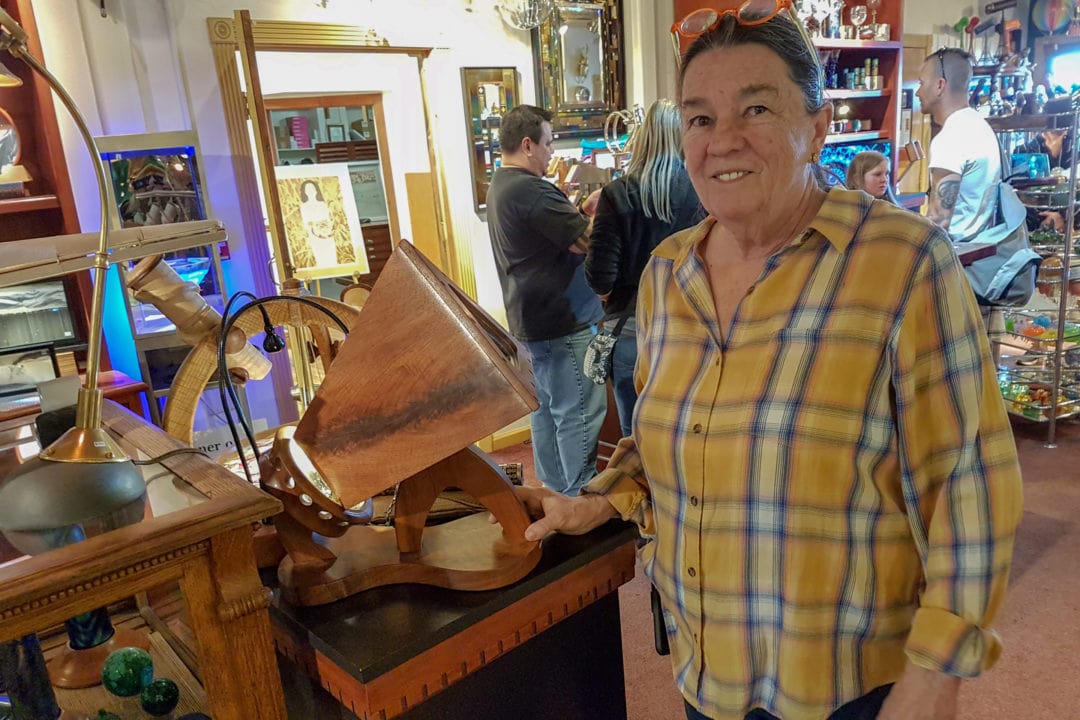
Wills opened the store with Diane Geoghegan in 1988; Geoghegan now runs the jewelry store next door to Nellie Bly. Before meeting Wills, Dryer ran a picture-framing shop in the Bay Area for more than 30 years. As a child actor, she was the voice of Lucy in several of the Charlie Brown cartoons. She says a mutual friend brought a few kaleidoscopes into her frame shop in the mid-1980s and asked if she’d consider selling them. “So I started getting familiar with kaleidoscopes, but it didn’t necessarily become a passion,” Dryer says. “Then Mary and I met, also through a mutual friend, and here I am.”
Wills and Dryer bought the building that houses Nellie Bly in 2005. As a 23-year-old in the late 1800s, the real-life Nelly Bly pioneered investigative journalism by going undercover in a New York City insane asylum.
“When we first started the business, we wanted to name it after a woman,” Wills says. “We looked at the historical women of Jerome and none of them struck us as right. Then I saw a map of mining claims around Jerome and came across the name of Nellie Bly. I researched her and we really liked her story so we named it after her.”
Shiny surfaces
People have been captivated by the reflective powers of mirrors and other shiny surfaces since ancient times. The ancient Egyptians used reflective surfaces to shine light along the corridors of darkened pyramids. Magicians have long used mirrors to create optical illusions.
But Scottish physicist Sir David Brewster is considered to be the first person who put mirrors into a tube with colorful items that could be rotated to provide mesmerizing and beautiful changing patterns. He called it a kaleidoscope, from three Greek words meaning “looking at beautiful shapes.” He intended it not merely as a child’s toy but as a tool to be used by designers and artists for inspiration.
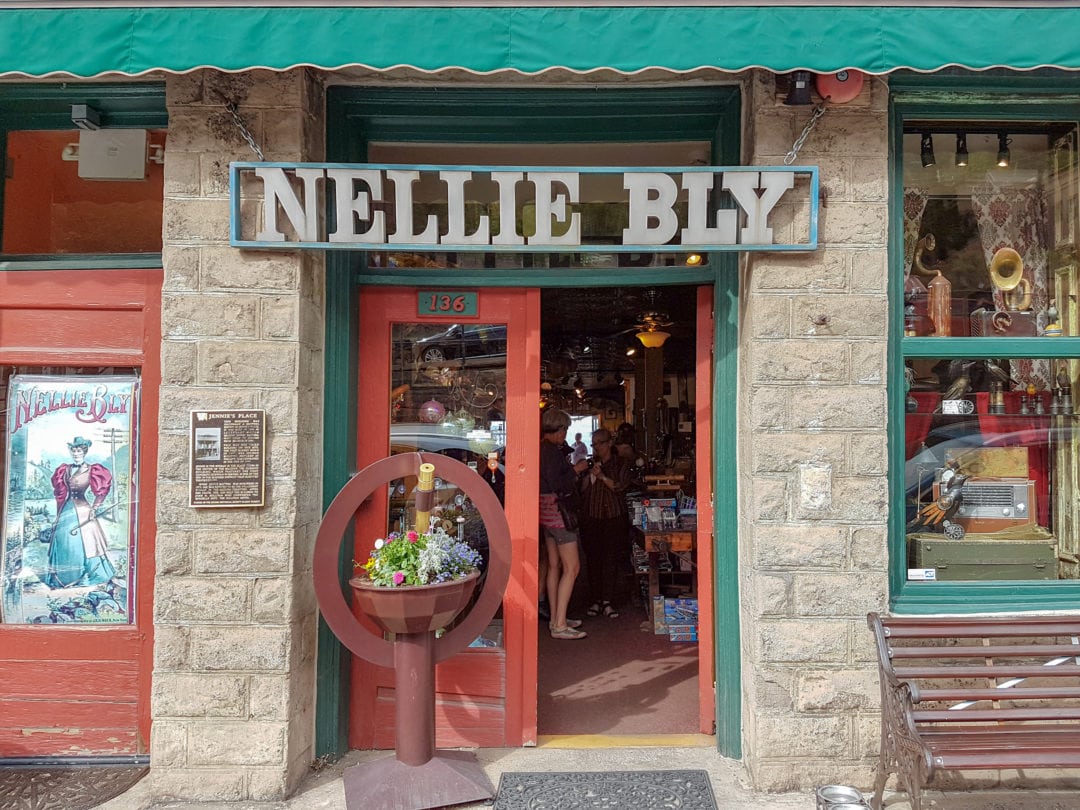
Brewster took out a patent for the first kaleidoscope model in 1817. The world subsequently went kaleidoscope crazy; people bought them by the hundreds of thousands—but due to a problem with the way patents worked at the time, Brewster never made a penny off of his invention.
More than 200 years later, people are still charmed by Brewster’s invention. The Brewster Kaleidoscope Society sends out a quarterly magazine to its members and organizes an annual convention. In October, Nellie Bly will hold its annual Kaleidoscope Weekend where collectors and artists gather and enthusiasts can learn how to make their own kaleidoscopes.
Through the looking glass
Kaleidoscopes still charm people, myself included. Dryer says she and Wills source their inventory from about 90 artists all over the world. Wills picks up one and shows me its exquisite detail. “We buy from about 15 different Japanese artists,” she says. “Kaleidoscope artists are revered in Japan and have a much higher status than they do here.”
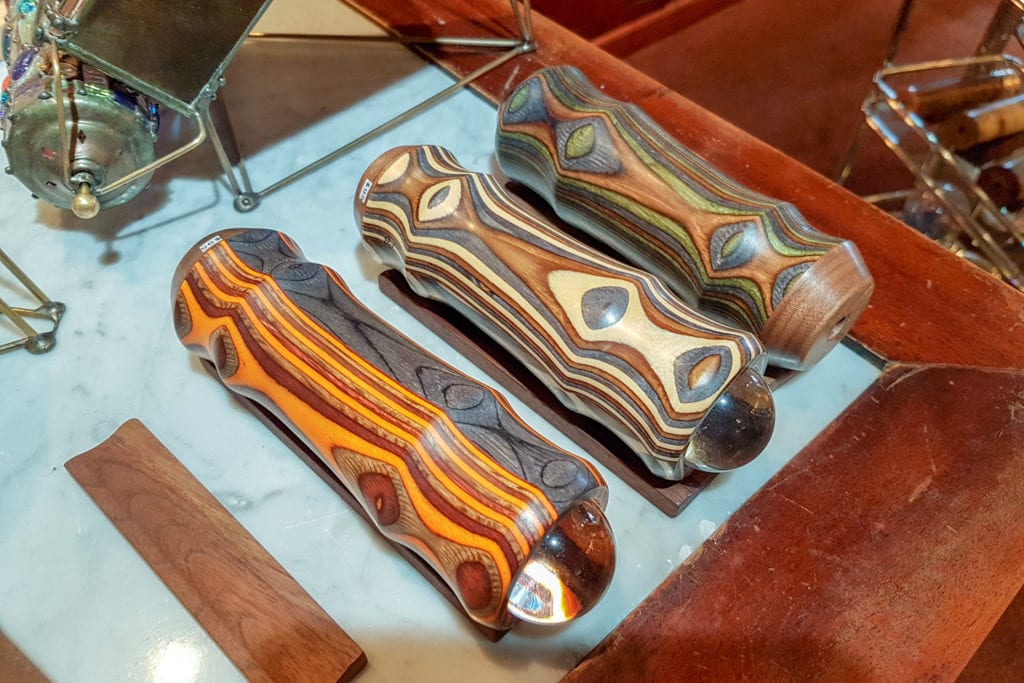
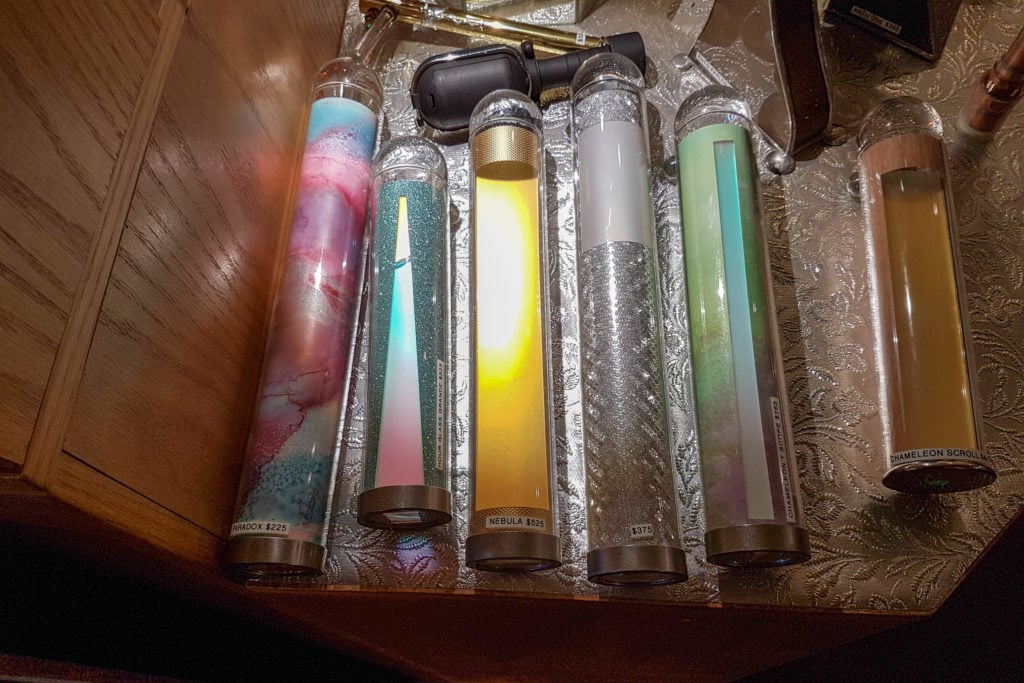
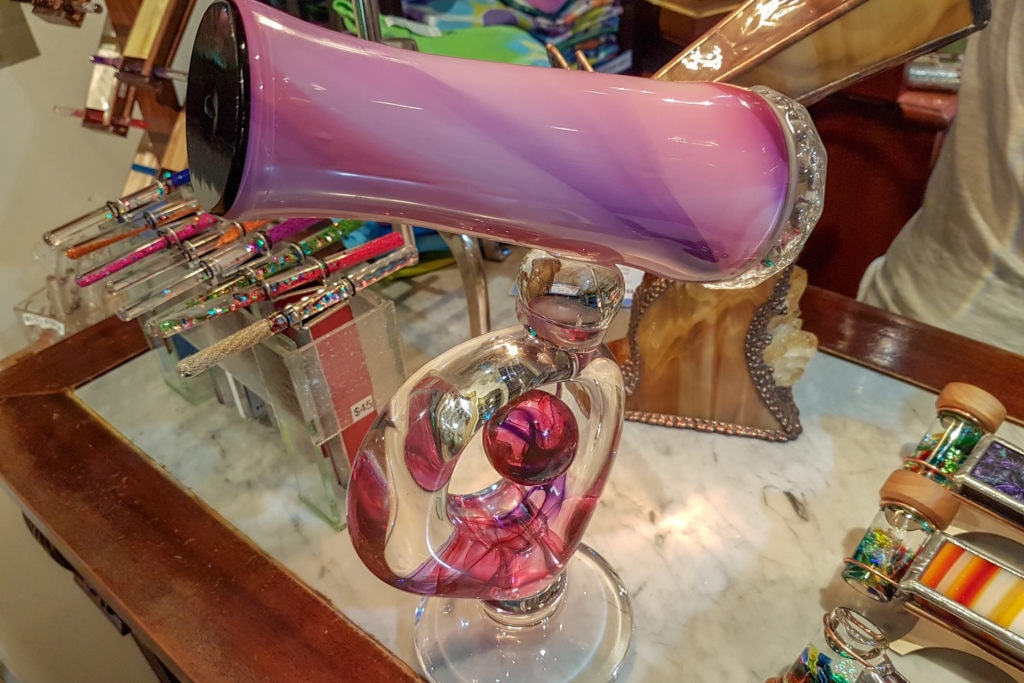
Kaleidoscopes like these are not kids’ toys, though Nellie Bly does sell the simpler kind too. Prices range from $4 to $20,000, but the majority of their collector items run from about $65 to $500. Despite Wills’ background in international marketing, she does no marketing at all for the shop. “People come in, see a ‘scope, they like it, they buy it,” Wills says. “Some people come in every year and buy a new ‘scope.”
I feel as if I’m going through the looking glass as the couple leads me behind the scenes, through doors, and up and down staircases. Some of the store’s kaleidoscopes are reserve stock, and others are antiques too delicate to be put on public display. Some of them date as far back as the late 1800s.
When I finally leave the glittering, colorful store, I feel as if I’m stepping out from the inside of a kaleidoscope and back into the real world. Dryer is back in her studio, so Wills bids me goodbye. “You’ll pass our house on the way out of town,” she says. “It’s the one with the flamingos outside.”
If you go
Many places are currently closed due to the spread of COVID-19. Please contact the shop directly for the latest information. Stay safe (and stay home)!






